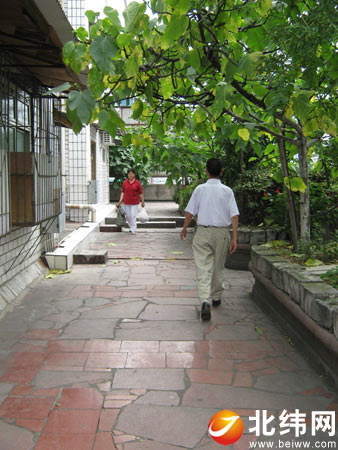Early Friday morning, the president of the United States warned residents of Minneapolis, via tweet, that they’d better calm down: “When the looting starts, the shooting starts.” Amid uproar, and after Twitter’s official condemnation of the tweet’s language, Trump tweeted a “clarification” later on Friday: “Looting leads to shooting, and that’s why a man was shot and killed in Minneapolis on Wednesday night. … I didn’t want this to happen, and that’s what the expression put out last night means.”
Though late Friday afternoon Trump claimed he did not know the origin of the phrase, earlier in the day media had quickly traced the “looting/shooting” phrase to Walter Headley, police chief of Miami from 1948 until his death in November 1968. In a press conference on Dec. 27, 1967, commenting on a new “get tough” policy he planned to institute to police the city’s black neighborhoods, Headley said: “We haven’t had any serious problems with civil uprising and looting because I’ve let the world filter down that when the looting starts, the shooting starts. These are my orders: Not three days after, but now. This is war. I meant it, every bit of it.”
Eight months later, the city experienced its own late-1960s uprising. What happens to a city when the police chief declares himself ready to fire on the populace? In the report of the Miami Study Team on Civil Disturbances—put together as part of the National Commission on the Causes and Prevention of Violence’s effort to analyze the spate of riots, assassinations, and civil conflicts that marked the 1960s—we can see some evidence as to the effects of Headley’s “tough on crime” policy.
AdvertisementThe study team looked at civil disturbances that unfolded in the neighborhood of Liberty City, Miami, in the week of Aug. 5, 1968, collecting testimony from community members and assembling a dossier of local news coverage of the events. The underlying causes of the 1968 unrest, the study team found, were common to many black communities. In the early 1960s, the state routed Interstate 95 through the neighborhoods in the city core where black people once lived, displacing thousands, writes Eric Tscheschlok in a history of the unrest. Many moved to a black neighborhood called Liberty Square, in the northwest of the city, which became Liberty City. Residents suffered, paying high rents mostly to absentee white landlords, who squeezed tenants for back rent by cutting off power and water, and refused to do repairs to their buildings. Sanitation was poor, and the Dade County Department of Public Health found in 1966 that black infant mortality was double that of the white population. There was a chronic lack of employment opportunities.
Advertisement Advertisement Advertisement AdvertisementBut it was Headley’s policies, the study team found, that were the spark for the violence and looting in August 1968. The rest of the press conference where Headley turned the “looting = shooting” phrase was just as brutal. Apparently provoked by several recent murders in the black community, Headley told the press that he planned to send “double patrols” out with “shotguns and guns.” “Felons will learn that they can’t be bonded out from the morgue,” the Miami Herald recorded Headley saying. Queried on the matter, the chief said that he was aiming this “get tough” policy at what the paper called “young Negro males, from 15 to 21,” and what Headley called “young hoodlums who have taken advantage of the civil rights campaign”—basically, the kinds of young people who refused arrest by telling officers they knew their rights.
AdvertisementIn follow-up press conferences and interviews, Headley doubled down. He defended his initial words: “My police officers have been charged with police brutality so often, they are used to it.” A reporter for the Herald spoke to Headley a few days later. “I know these guys aren’t going to print or broadcast all the things I’m saying. There seems to be a press policy against saying a Negro has committed a crime. You’re not supposed to stir up hard feelings,” Headley said. He complained about black leaders who tried to speak with him about adopting policies of community policing. He cast himself as a hero: “Don’t these people know that most of the crimes in the Negro districts are against Negroes?” Trotting out a phrase that was already a chestnut, he said: “Everyone knows I’m not a racist.” “He has laid his job on the line,” the reporter wrote, with some seeming admiration, “and he knows it.” (Historian Lawrence Glickman noted on Twitter on Friday that the coverage that Headley’s press conference received in national newspapers in 1967 was, by and large, positive.)
Advertisement Advertisement AdvertisementDuring the eight months between December 1967 and August 1968, when the Liberty City disturbances took place, the police’s increased use of stop-and-frisk methods, and the presence of shotguns and dogs made everything worse in the community. It seemed, the community members interviewed by the study team said, that the policy had “revived within the Miami Police a basic intolerance” for black people. A follow-up piece in the Herald, summarizing reaction to Headley’s policy in the black community, quoted the director of a community poverty program: “There are some trigger-happy policemen waiting for this kind of thing. A lot of these guys are afraid of black people.”
This predication bore out. “Word spread that the Police were regularly hailing black males on the street, addressing them as ‘boy’ or ‘n—r,’ ” and demanding ID and rationale for their movements, the community members told the study team. “Patrols with shotguns and dogs regularly entered predominately black clubs and bars and demanded identification and purpose of presence from all patrons.” There was a widely reported incident in which two police officers were accused of dangling a black teenager from a bridge by his ankles, after stripping him to his underwear.
Advertisement Advertisement AdvertisementEdward Hepburn, 18, interviewed by the Herald for a story that ran on Jan. 29, 1968, told a story of encountering police officers in a bar where he was shooting pool. Two police officers came in, Hepburn said, and “everyone stopped playing but me.” “The sergeant said ‘When you see me coming I want you to stop,’ ” Hepburn said. “So I asked him why and he said ‘Cause you’re my enemy.’ He put me in his car and told me ‘when I talk to you, I want you to talk to me nice,’ so I started saying ‘yessir.’”
AdvertisementThese were the study team’s core findings: The chilly relationship between the community and Headley’s police did not deter looting during the disturbances of early August 1968. (The looters, Tscheschlok writes, largely avoided black-owned businesses.) In fact, the team thought, the police’s overreliance on shock tactics like dogs and shotguns rendered them unprepared during the unrest itself. “In our judgment, this is not unrelated to the basic get-tough, show-of-force policy,” the report argued. The police officers were out of touch with the community, they had no “knowledge of their psychology” or “sensitivity to how and where disturbances might break out.” Reached for comment on vacation in North Carolina, Headley repeated his “shooting/looting” line; he did not cut his break short to return to the city and manage the situation.
Advertisement AdvertisementPart of Liberty City fell in the jurisdiction of Dade County (as it was then called), and the study team contrasted the Miami police’s failure to the relative success of the sheriff’s department of that county, which did have a community relations program in place. Sheriff E. Wilson Purdy, who had taken office in 1967, had created a Community Service Section. Tscheschlok points out that, in 1967, crime rates were lower in the parts of Liberty City that fell under Purdy’s purview than in the sections where Headley’s police were in charge, by almost 16 percentage points. And it was when the sheriff’s office took over the management of the situation that the looting and unrest came to an end.
AdvertisementFormer Alabama governor, perennial presidential candidate, and fervent segregationist George Wallace may have repeated the looting = shooting line at a 1968 rally in Pittsburgh (or so Michael McGough, who was there, wrote in the Post-Gazette, looking back from the vantage point of 2005; Wallace certainly agreed with the sentiment). And at least one explainer contextualizing Trump’s tweet Friday argued that Headley may have gotten the phrase from Birmingham, Alabama, Commissioner of public Safety “Bull” Connor, fellow notoriously racist lawman of the civil rights era.
Advertisement Advertisement AdvertisementPopular in News & Politics
- Congress’ Perpetual Coup Machine Is Merely Resting
- The One Thing Donald Trump Can’t Escape in Court
- The Story About a Worm Eating RFK Jr.’s Brain Is Not As Funny As It Sounds
- What You’re Not Seeing From the Darién Gap
In any case, as the historian Glickman’s thread makes clear, the reactionary “looting = shooting” opinion wasn’t confined to one side of the aisle. On April 18, 1968, the Miami Herald reported that Headley applauded the actions of Chicago’s Democratic Mayor Richard Daley, when Daley ordered the police to shoot “to maim or cripple” looters, and to shoot “to kill” arsonists, during the riot in his city that followed the assassination of Martin Luther King Jr. “That could have been me talking,” Headley said to the Herald’s Jim Buchanan. “There has been a policy of appeasement all over the country, and it is not going to accomplish anything.”
Forty-seven percent of Americans asked about the matter in a Gallup poll that summer said that they approved of Daley’s stated policy. At the very least, the outrage over Trump’s tweet, and the need he felt to walk it back (albeit in a way that makes his insincerity clear), marks an improvement of sorts. Small mercies.
Tweet Share Share Comment








